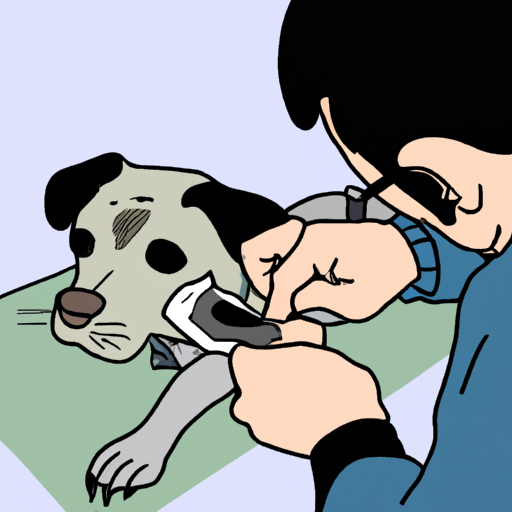Introduction
You love your furry friend, right? Of course you do. You’re a caregiver, after all. You want what’s best for them. That’s why you’re considering getting them microchipped. But where exactly do they chip dogs? Let’s dive into that.
What is a Microchip?
Before we get into the “where,” let’s talk about the “what.” A microchip is a small electronic device, about the size of a grain of rice. It carries a unique identification number, and it’s implanted under your dog’s skin using a syringe. No anesthesia is required, and it’s no more painful than a typical injection.
- Size: Approximately the size of a grain of rice
- Location: Implanted under the skin
- Procedure: Uses a syringe, similar to a typical injection
The Location of the Microchip
Now to answer your main question: Where do they chip dogs? The most common location to place the microchip is between your dog’s shoulder blades. This location is chosen because it’s central and there is a lot of skin and muscle to embed the chip.
The Importance of Microchipping Your Dog
Why should you go through with this? Well, microchipping your dog has several benefits:
- Identification: If your dog ever gets lost, the chip will carry all the necessary information to help them find their way back to you.
- Proof of Ownership: In case of any disputes, the chip can serve as proof that the dog is indeed yours.
- Peace of Mind: Knowing that your dog is microchipped gives you peace of mind because you know you have an additional method to find them should they ever get lost.
The Process of Microchipping
Getting your dog chipped is a simple process:
- Find a Vet: Find a vet or an animal organization that offers the service.
- Schedule an Appointment: Schedule an appointment for the procedure.
- During the Procedure: The vet will clean the area between your dog’s shoulders, and then insert the microchip using a special syringe.
- Post-Procedure Care: There’s usually no post-procedure care required, but if your dog seems uncomfortable, call the vet.
| Step | Action |
|---|---|
| Step 1 | Find a vet |
| Step 2 | Schedule an appointment |
| Step 3 | The procedure |
| Step 4 | Post-procedure care |
FAQs
Q: Does microchipping hurt my dog?
A: No, it’s similar to a typical injection and doesn’t require anesthesia.
Q: Can the microchip move from where it’s implanted?
A: It’s rare, but sometimes the chip can migrate from the original location. Regular vet check-ups will ensure it’s still in place.
Q: Can I track my dog using the microchip?
A: No, a microchip isn’t a GPS tracker. It only serves as identification when scanned by a vet or an animal rescue organization.
In conclusion, as a caring and responsible pet owner, microchipping your dog is one of the best ways to ensure their safety and your peace of mind. It’s a simple, relatively painless process that can make a world of difference in the event that your dog ever gets lost.



